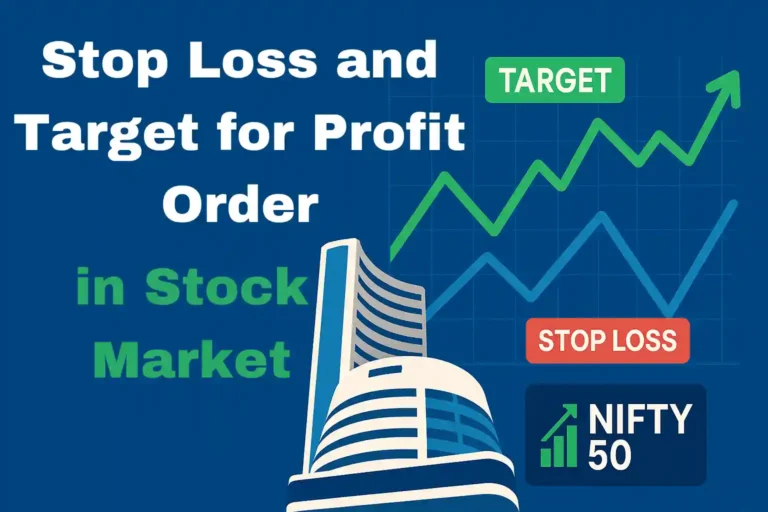If you are new to the stock market, you might hear the terms Stop Loss and Target for Profit many times. These are very important tools used by traders and investors to manage risk and plan profits.
Let us understand them with an example using Nifty 50.
What is Stop Loss?
Stop Loss means setting a limit to how much loss you are ready to take in a trade.
If the stock or index price goes in the opposite direction (against your trade), the stop loss helps to automatically exit the trade at a certain price. This saves you from losing more money.
Example:
You buy Nifty 50 at 22000. You do not want to lose more than 100 points.
So, you set a stop loss at 21900.
If Nifty falls to 21900, your trade will automatically close, and your loss will be limited to 100 points.
What is Target for Profit?
Target for Profit (also called Take Profit) means setting a price where you want to book your profit.
Once the price reaches your target, the trade closes automatically and your profit is locked.
Example:
You buy Nifty 50 at 22000. You want to make 200 points profit.
So, you set a target at 22200.
If Nifty rises to 22200, your trade will close automatically, and you will get the profit of 200 points.
Why are Stop Loss and Target Important
- Control Your Losses – Helps you protect your capital
- Fix Your Profit – You do not have to keep watching the market
- No Emotions – It brings discipline and removes fear or greed
Conclusion
Stop Loss and Target Orders are like seat belts in a car.
They protect you during market ups and downs.
Whether you are trading Nifty 50, stocks, or any other index, always use them wisely.

